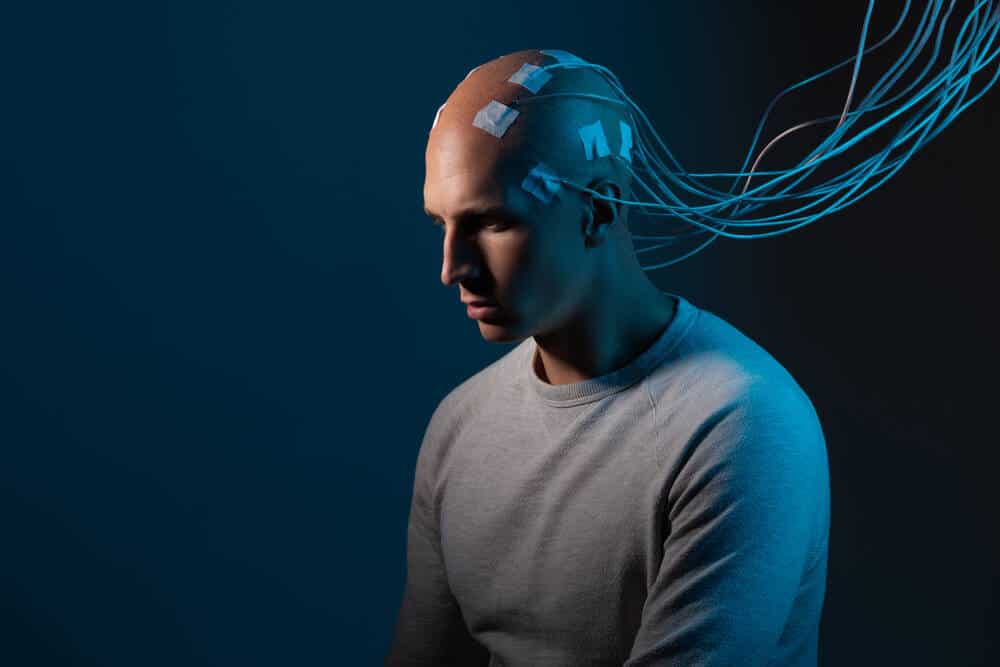- The growing role of AI in healthcare
- Tiny teeth-brushing robots – an innovation in dental care?
- Can deep learning algorithms treat brain disorders?
- The wheelchair of the future
- Personalised meals optimised for nutrition
- The gardens that grow bioengineered food
Healthcare is a field that has progressed continually since the dawn of time. In recent decades, however, the quality of healthcare and medical treatments have improved exponentially, with seismic leaps in medical knowledge happening in just the last few years. Based on current trends, we can expect the years ahead to offer huge developments and discoveries in healthcare. As well as the constant invention of new medicines, advances in AI, bioengineering, and other types of technology are revolutionising healthcare – both in terms of preventing illnesses and in treating them. Detecting illnesses and conditions is also happening earlier and earlier due to the rapidly increasing accuracy of diagnostic tools. For example, vitamin deficiencies and food intolerances can be detected in our blood, and cancers and heart disease in our saliva. The increasingly widespread accessibility of useful health-related data – such as the metrics related to heart rate, activity, and sleep quality generated by smartphones and smart fitness trackers – is another significant factor. Combined with data analytics, advanced AI, and improved medical treatments, the need for human doctors to make decisions could in the future very well be reduced or even eliminated altogether.
The growing role of AI in healthcare
Although human experts play a critical role in healthcare, AI also has its distinct benefits, and this is becoming more and more apparent. One area in which AI offers key advantages is in diagnostics. The ability of AI algorithms to detect patterns in health-related data and instantly flag potentially-significant anomalies is unmatched by humans. AI can also cross-reference data with that of countless other patients and cases in a matter of seconds, increasing the accuracy of its diagnoses. Some tests conclude AI to be accurate in diagnoses 87 per cent of the time, compared to humans’ accuracy of 86 per cent. Taiwanese writer and computer scientist Kai-Fu Lee states: “The crux of diagnosis involves collecting data (symptoms, medical history, environmental factors) and predicting the phenomena correlated with them (an illness). This act of seeking out various correlations and making predictions is exactly what deep learning excels at”. Healthcare technology by IBM Watson has even reached 99 per cent accuracy when it comes to diagnosing cancer.
Because of these advantages, the number of hospitals in the US using AI has tripled in the last two years. The global healthcare AI market was worth an estimated 10 to 11 billion USD in 2021, but is forecast to reach almost 190 billion USD by the end of this decade – a staggering figure. However, public opinion is divided on AI in healthcare. A survey by the Yale Cancer Centre found that over half of respondents believed AI would improve healthcare, although most also expressed concerns over privacy, misdiagnosis, higher costs, and reduced access to clinicians. The number of sceptical respondents belonging to racial minorities was higher than other demographics, possibly due to concerns that AI may learn and repeat existing negative biases in the humans that programme them. Healthcare leaders are more optimistic about healthcare AIs, with a KPMG survey revealing that nine out of ten believe that it is already improving efficiency and patient access. Despite public concerns, it seems likely that the role of AI in healthcare will continue to grow. It isn’t inconceivable that one day AI could use an even wider range of data to predict current or future health conditions, such as the data on our fitness trackers and the food products in our online grocery shopping carts.
Tiny teeth-brushing robots – an innovation in dental care?
A collaboration between the University of Pennsylvania’s School of Dental Medicine and its School of Engineering and Applied Science has explored the possibility of using microrobots for dental hygiene. The system uses “iron oxide nanoparticles that have both catalytic and magnetic activity.” These can be directed by magnetic fields to assemble in different forms – a bristle-like structure or a floss-like string, for example – and remove dental plaque and food particles from the surfaces of the teeth or the tiny gaps between them. The nanoparticles also produce antimicrobials that kill bacteria. The swarm-like nature of the particles enables them to be personalised to each user’s mouth, unlike the generic, one-size-fits-all toothbrushes we use today.
Looking after your teeth is traditionally a process that involves brushing, flossing, and rinsing, but this system can do all three simultaneously. The researchers tested this system on both 3D-printed tooth models and real teeth, and found it highly promising. The microrobots removed all detectable pathogens from teeth and surfaces without damaging the tissue of the gums. They have even been approved by the FDA, meaning that they could come into use in the not-too-distant future. These microrobots could not only improve dental hygiene for the masses, but could also help people with disabilities who would otherwise struggle to take care of their teeth. In the words of Hyun (Michel) Koo, a University of Pennsylvania professor of orthodontics and the study’s co-author: “Routine oral care is cumbersome and can pose challenges for many people, especially those who have a hard time cleaning their teeth.”
Can deep learning algorithms treat brain disorders?
It isn’t just diagnoses where deep learning algorithms can be useful. In conjunction with microelectronics and neural implants, researchers are exploring the potential for algorithms to detect abnormal brain activity in patients with neurological conditions like epilepsy and Parkinson’s disease. A neurotechnology centre called CRANIA, which includes scientists and engineers from the University of Toronto and the University Health Network, are using deep learning AI algorithms to identify “hidden biomarkers” that denote dangerous electrical signals in the brain. Once these are identified, neural implants treat them with electrical stimulation – “like a pacemaker for the brain”, in the words of assistant professor Xilin Liu of the University of Toronto. Traditional implants consistently produce electrical stimulation at the same rate, yet deep learning algorithms can instantly activate implants only when needed, and to the optimal level. This technology has shown promise in treating conditions like epilepsy and Parkinson’s disease, but Liu believes that it could also be useful in treating chronic pain, dementia, Alzheimer’s disease, depression, and other conditions.

The wheelchair of the future
Brain-computer interfaces – or BCIs – have been in use for a while now. Among other things, they allow people with disabilities to control the movement of their electric wheelchairs. However, most existing BCWs (brain-controlled wheelchairs) are semiautomatic, and often have slow responses. A group of scientists from China’s National University of Defense Technology has developed a new BCW that integrates computer vision and augmented reality (AR) in order to increase the speed and accuracy of responses and the degree of fine control experienced by the user. A head-mounted display provides a user interface and detects environments and objects using computer vision. Users can choose targets for the wheelchair to automatically navigate to. Rather than removing control and agency from the user, AI helps the user make informed decisions on navigation, even in unfamiliar environments.
Personalised meals optimised for nutrition
The food that we eat greatly determines our overall health. However, every person has slightly different nutritional needs as their existing diets vary. A restaurant in Japan called Sushi Singularity aims to provide meals personalised to each customer to give them the specific nutrients they need. Customers provide the restaurant’s chefs with biometric samples taken with health kits they receive when they make a reservation. The chefs then use this biometric data to determine individual nutrient requirements, and personalise each customer’s meal to fulfil these. What’s more, the sushi is created by an advanced 3D printer. While the restaurant’s model may at first seem like a marketing gimmick, the concept of personalised meals inspired by biometric data could transform the way we eat and our public health.
The gardens that grow bioengineered food
The Methuselah Foundation is a biological non-profit charity dedicated to increasing the human lifespan. Its founder, scientist David Gobel, is currently working on a way to grow food for astronauts in space for NASA. However, the benefits of such a project – if successful – could extend to all of us here on Earth. Creating a ‘garden of the future’ could enable us to grow biologically engineered food that helps us live longer, healthier lives. Ritch Wood, CEO of skincare firm Nu Skin, has also explored the possibility of similar ‘smart gardens’. Due to the unpredictable nature of farming, Wood turned to controlled-environment agriculture, or CEA, to produce ingredients for his products. His firm Grōv Technologies aims to control every aspect of the environment where plants grow, such as light wavelength, humidity, temperature, and carbon dioxide saturation in air, and therefore the nature of the plant itself. This method could enable growers to design crops with specific nutrient and caloric contents – for example, foods with higher levels of Vitamin D in parts of the world that experience less sunlight. Scientists from Singapore Polytechnic believe that this approach could be combined with biometric data from wearables to optimise food for specific towns and cities.
Closing thoughts
While none of these promising innovations are a fully comprehensive solution to all healthcare problems, the combined results of advances like these could have hugely positive impacts on global healthcare. Improving public health in general could reduce the strain on healthcare services, improve patient access to medical care, and enable doctors and other healthcare professionals to treat each patient with the time and attention they need. In parts of the world with paid healthcare systems, people’s need for expensive visits to healthcare providers could be dramatically reduced. While the concept of doctors becoming obsolete seems unlikely any time in the foreseeable future, AIs and other systems that improve and protect health could soon provide solutions to the challenges of growing and ageing populations and the lack of resources to treat them.
Share via:


